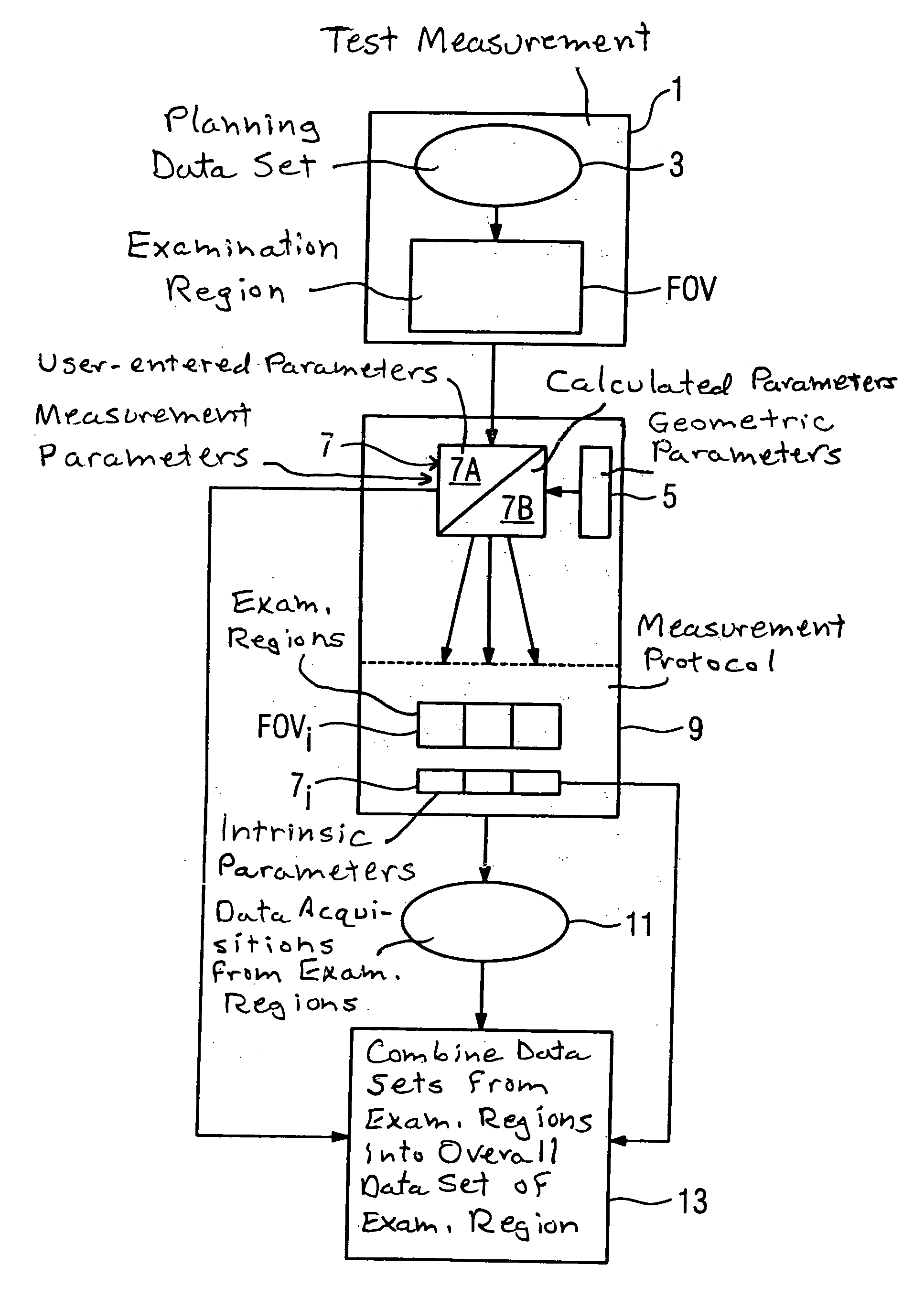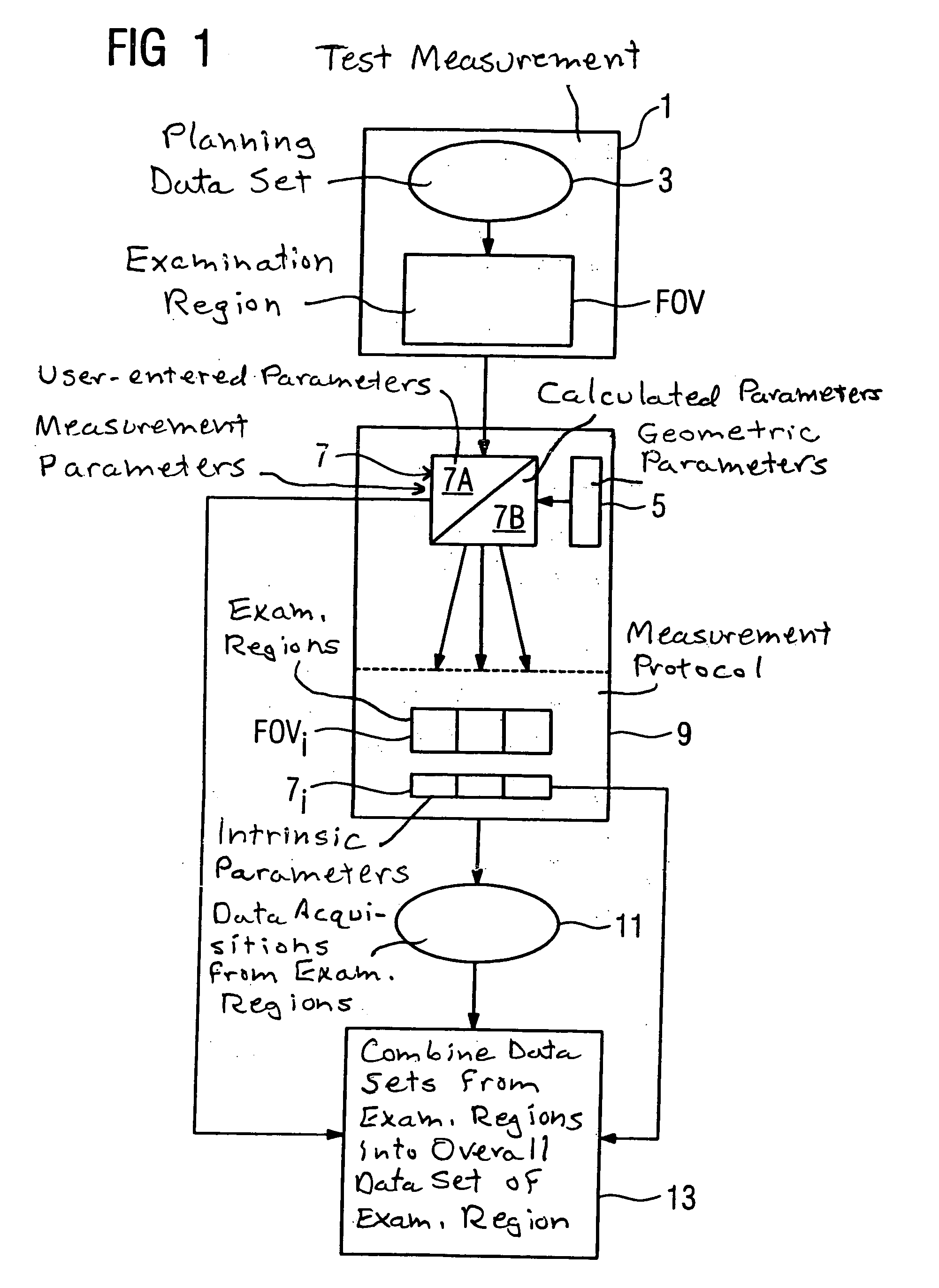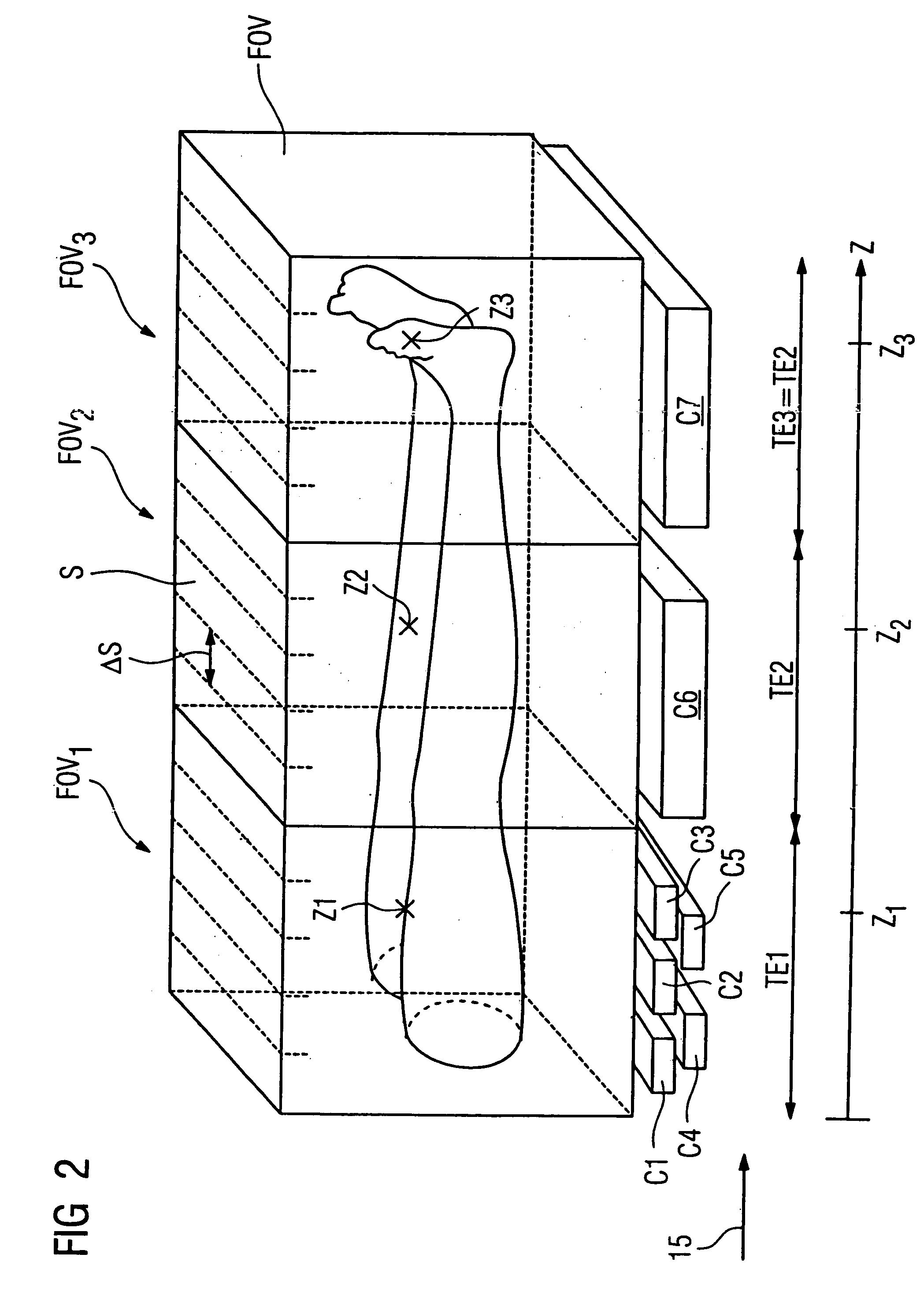Method for acquiring magnetic resonance data from a large examination region
large acquisition area technology, applied in the field of acquiring data from an examination region with a magnetic resonance apparatus, can solve the problems of large time expenditure, significant expertise, and difficulty in acquiring data from an examination region that is larger than the available maximum acquisition region of the magnetic resonance apparatus, and achieve the effect of reducing artifacts
- Summary
- Abstract
- Description
- Claims
- Application Information
AI Technical Summary
Benefits of technology
Problems solved by technology
Method used
Image
Examples
Embodiment Construction
[0032]FIG. 1 explains the method for acquiring data from an examination region with a magnetic resonance apparatus, wherein the examination region is larger than a maximum acquisition region of the magnetic resonance apparatus. A planning data set 3 is acquired with a test measurement 1. The test measurement 1 is, for example, a low-resolution data set of the examination region obtained with the “Step-by-Step&Compose” technique or the “Move-during-Scan” technique. An examination region FOV is established using the planning data set 3. For this, the user marks the examination region FOV in an overview image and associates a slice alignment and an RF measurement sequence with it.
[0033] The measurement parameters 7 include parameters 7A that are directly entered by the user, for example parameters of the RF measurement sequence, TE parameters, the resolution of the ME exposure, for the examination region FOV. The parameters 7 also include parameters 7B resulting due to a division of t...
PUM
 Login to View More
Login to View More Abstract
Description
Claims
Application Information
 Login to View More
Login to View More - R&D
- Intellectual Property
- Life Sciences
- Materials
- Tech Scout
- Unparalleled Data Quality
- Higher Quality Content
- 60% Fewer Hallucinations
Browse by: Latest US Patents, China's latest patents, Technical Efficacy Thesaurus, Application Domain, Technology Topic, Popular Technical Reports.
© 2025 PatSnap. All rights reserved.Legal|Privacy policy|Modern Slavery Act Transparency Statement|Sitemap|About US| Contact US: help@patsnap.com



